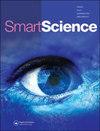VL-NOMA系统中6G通信的功率分配策略综述
IF 1.4
Q2 MULTIDISCIPLINARY SCIENCES
引用次数: 1
摘要
摘要本文讨论了启用的第六代(6 G) 可见光非正交多址(VL-NOMA)场景中的通信。在VL-NOMA 6的发展中部署的发光二极管 当与射频(RF)/毫米波()、太赫兹(THz)、自由空间光学(FSO)和VL互补时,G限制了较低的效率。目前部署的第五代(5 G) 诸如信号故障、低功率、数据丢失、来自(5)的延迟和信号强度损失等技术都用6来解决 G提供颠覆性技术、来自()的延迟、大规模连接、无蜂窝通信、改进的机器学习算法、新的安全措施、更节能的基础设施智能网络管理、新频谱、人工智能(AI)、支持足够带宽的分解和虚拟化,并提高数据速率。PA使用可用功率将整个信号分配给连接到VL-NOMA应用程序的多个设备,用于设想的虚拟现实,解锁室内和室外传输的所有可能性,以实现卓越的准确性、可靠性和无限制的访问。6 G 2030路线图将LED定位为载波,为绿色解决方案分配VL-NOMA PA技术,如本文所述,该技术改善了高服务质量、更高的数据速率、降低的功耗(使用元表面方案)、高容量、能效、低成本、照明、通信和指示。图形摘要本文章由计算机程序翻译,如有差异,请以英文原文为准。
Power allocation strategies for 6G communication in VL-NOMA systems: an overview
ABSTRACT This paper discusses an overview of power allocation (PA) strategy for enabled sixth-generation (6 G) communication in visible light non-orthogonal multiple access (VL-NOMA) scenario. Light emitting diode (LED) deployed in the advancement of VL-NOMA 6 G limit-less efficiencies when complemented with radio frequency (RF)/millimeter-wave ( ), terahertz (THz), free-space optical (FSO) and VL. The encountered challenges in the currently deployed fifth generation (5 G) technology such as signal failures, low power, data loss, latency from (5 ), and loss of signal strength were solved with 6 G providing disruptive technologies, latency from ( ), massive connectivity, cell-less communications, modified machine learning algorithms, new security measures, more energy-efficient, infrastructure smart networking management, new spectrum, artificial intelligence (AI), disaggregation and virtualization supporting enough bandwidth, and increase data rate. The PA uses available power to distribute entire signals assigning power levels to multi-devices connected to VL-NOMA applications for envisioned virtual reality, unlocking all the possibilities of an indoor and outdoor transmission positioned to achieve superior accuracy, reliability and unlimited access. The 6 G 2030 roadmap positioning LED as a carrier assigning VL-NOMA PA techniques for a green solution improving high quality of services, higher data rate, reduced power consumption (using metasurface schemes), high capacity, energy efficiencies, low cost, illumination, communication and indication as detailed herein. Graphical abstract
求助全文
通过发布文献求助,成功后即可免费获取论文全文。
去求助
来源期刊

Smart Science
Engineering-Engineering (all)
CiteScore
4.70
自引率
4.30%
发文量
21
期刊介绍:
Smart Science (ISSN 2308-0477) is an international, peer-reviewed journal that publishes significant original scientific researches, and reviews and analyses of current research and science policy. We welcome submissions of high quality papers from all fields of science and from any source. Articles of an interdisciplinary nature are particularly welcomed. Smart Science aims to be among the top multidisciplinary journals covering a broad spectrum of smart topics in the fields of materials science, chemistry, physics, engineering, medicine, and biology. Smart Science is currently focusing on the topics of Smart Manufacturing (CPS, IoT and AI) for Industry 4.0, Smart Energy and Smart Chemistry and Materials. Other specific research areas covered by the journal include, but are not limited to: 1. Smart Science in the Future 2. Smart Manufacturing: -Cyber-Physical System (CPS) -Internet of Things (IoT) and Internet of Brain (IoB) -Artificial Intelligence -Smart Computing -Smart Design/Machine -Smart Sensing -Smart Information and Networks 3. Smart Energy and Thermal/Fluidic Science 4. Smart Chemistry and Materials
 求助内容:
求助内容: 应助结果提醒方式:
应助结果提醒方式:


